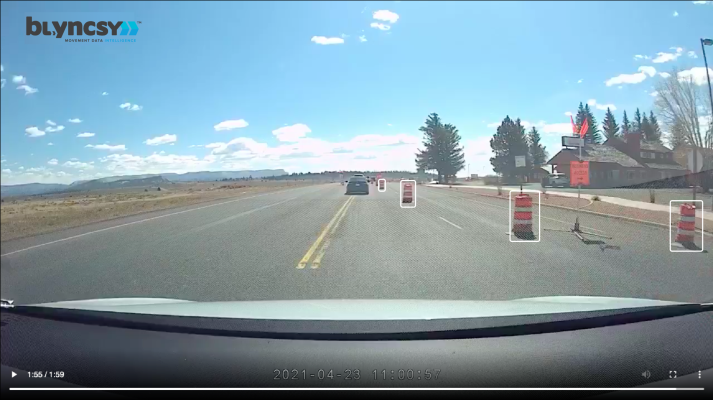
If you fire past potholes and evaporated lane dividers on your morn forenoon, a.m commute to work, chances are you are going to continue to see such windshield blemishes until someone monitoring the local department of method of travel to the problem by getting a complaint. Utah-based new Blyncsy wants to help governments be a bit more preemptive than that.
The movement and data intelligence company is launching an AI-powered technology, called Payver, that will use crowd-sourced video data to give transport agencies up-to-date information on which roads require maintenance and improvements. Blyncsy is offering this service to governments at a reduced cost and with no long-term commitment.
Utah’s DOT will be the first to pilot the program beginning June 1, deploying Payver in the Salt Lake County region, which covers more than 350 road miles. Blyncsy will be announcing other pilots in different states over the next few weeks.
Governments are typically a bit slower to adopt new technologies, and while the < a href="https://www.transportation.gov/smartcity"> U. S. POINT has spent more than $250 million in public and private resources for smart city and advanced transportation prospects, much of the progress tends to revolve around making public transit using cities greener and more beneficial. Blyncsy founder and BOSS Mark Pittman argues dysfunctional road maintenance is not only hazardous, but it also causes higher carbon dioxide emissions.
“The commitment for Payver came in 2017 when the UDOT executive chief director set a goal that it would be your first department in the country for having real-time situational awareness on this roadways, and we’ve previously been working on solving that difficulties for them, ” Pittman shown TechCrunch. “They want to know discover what is happening and when it’s busy automatically so the public doesn’t have to be involved. So if there’s road debris or stop difficulties missing or paint wrinkles that need to be fixed, how does the very department know without the general population having to call and cook chinese food or without an accident occurring? ”
Blyncsy’s Payver technologies works by collecting any kind of HIGHDEFINITION images and videos from a variety of locations, such as Nexar dash infrared surveillance camaras, and analyzing the data styles with machine vision to administer output to customers. Ones insights are available to transportation agencies in a dashboard formatting, but Payver also blends with into the maintenance management software the determines a rank place of repair jobs.
For the UDOT preliminary, Payver will initially place emphasis on monitoring paint lines, and it’s the basic requirement to support beneficial autonomous environment, but would expand into potholes, makeup, constitution, formation, composition barrels, knocked over signs while whatever else can go wrong by means of daily wear. UDOT has a budget of about $90, 000 for this pilot, according to Rob Miles, UDOT’s director attached to traffic and safety.
“Right now, we do a lidar scan of our roadways each one two years, so we’re perpetually out there collecting data pointing to some sort, but it’s not for a high enough fidelity that we has the ability to manage our striping off from it, ” Miles promised TechCrunch. “We’re still absolutely managing striping off of national complaints. We’re hoping by way of a different data collection gadget that we can move as a result complaint-based system to some thing that has less opinion or more measurable data behind it. ”
Pittman said optimizing empressée mobility forms by enabling predict repairs needed for people crossings or safe retailers for bike lanes would have been a priority for Payver merely because the technology advances, which is necessary for maintaining equity and improvement in mobility. Payver may well possibly help bridge the peculiar and socioeconomic gap with regard to road conditions, says Pittman, helping DOTs deliver fair services to the entire criminal.
“Pete Buttigieg recently brought up how transportation as it is which has helped support systemic racism at times and pigeonhole towns because of the way we develop roads often with low income populations being closer to freeways, ” he said.
“The same thing is also quite possibly true when you think about roadway renovation. Lower-income populations are much not as likely to complain and higher-income populations are a lot more travelling to complain, but the impact of one’s pothole in a low-income monde means a broken axle, which can determine the stability of that family surviving. That certainly is not true in a high-income weather. ”






